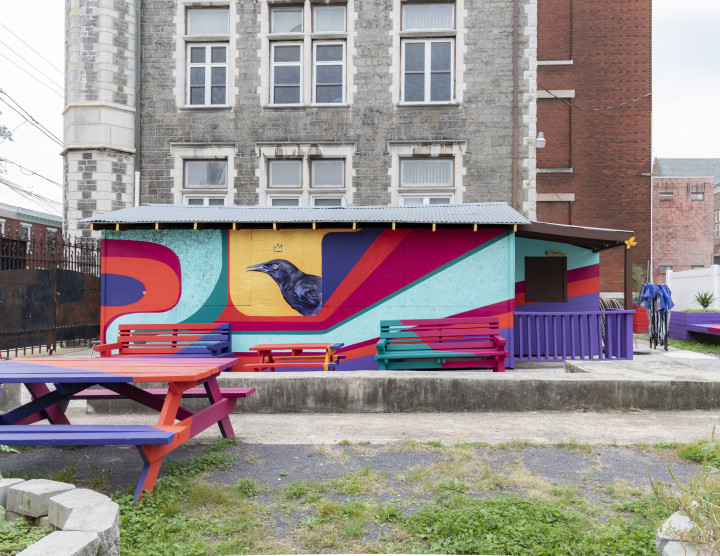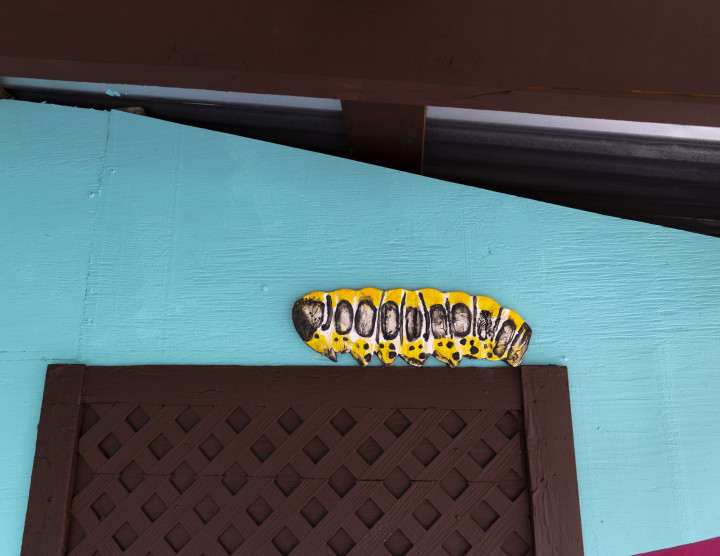
The idea was simple: provide paid arts training for Norris Square residents, creating a space that fosters economic empowerment, community resilience, cultural education and creative expression. Building upon The Galleries at Moore’s existing relationship with Norris Square Community Alliance (NSCA), we determined that this Kensington-area neighborhood—a stronghold of Latinx culture in Philadelphia at risk of rapid gentrification—was the right place for community-led artistic intervention. We enlisted local muralist Betsy Casañas and members of the Puerto Rico-based collective Taller Malaquita, Rosenda Álvarez Faro and Zuania Minier Jimenez, to build up the creative skills of participating community members and work alongside this group to revitalize a community garden.

Recruiting a cohort of program participants in the midst of a pandemic was no small feat, but with the help of NSCA’s Stephanie Santiago and Reverend Adan Mairena of West Kensington Ministry, we rounded up a cohort of seven Resident Educators that included two mother and son duos, a former NSCA staff member and expert glassblower, a recent high school graduate and student of graphic design, and a neighborhood elementary art teacher. Representing a wide range of skills and experience, this group received hands-on instruction in inclusive teaching strategies and three areas of artmaking, eventually putting this training into practice by co-facilitating a series of workshops for neighborhood youth.
We began to convene for weekly workshops just over a year into the pandemic. Having spent much of 2020 confined to our homes, clocked in as essential workers, or some combination of the two, there was a great deal of social and emotional healing to be done. Over shared meals and experiences—including learning to sew, paint and work with clay; exchanging ideas and information about local issues; gardening in a sweltering heat wave and brushing up on Spanish language skills—this core group formed a family of makers and mutual caretakers. By adhering to a flexible and responsive decision-making process, we cultivated an environment that encouraged active participation in both the development and implementation of all project activities.

The participatory design process was baked into the project structure. Connecting with Norris Square residents via zoning meetings and focus groups, we gathered feedback that informed the content and scheduling of our weekly workshops. In consultation with the Resident Educators and other key stakeholders, a designer created a graphic identity for Arte pa’l Barrio that reflected the group’s vision for the project. Prior to developing a mural proposal, the artists solicited ideas on visual and thematic elements. The group voiced a collective interest in asserting the neighborhood’s capacity to nurture both beauty and strength in the face of adversity through symbols of both local and Afro-Caribbean culture including Taino petroglyphs, neighborhood plant life, and the sociable ‘chango’, a bird commonly found throughout the Caribbean islands. Even our summative evaluation method—Ripple Effect Mapping—was chosen because it encouraged a democratic analysis of the effects of our artistic and programmatic interventions. At every step, community members were invited to join the process as full and equal partners.
I am deeply grateful to the many individuals who shared their stories, applied their skills, and committed their time towards making this project a success. Your collective generosity and dedication are truly humbling, and I will fall back on the lessons of this formative experience in all of my future civic and creative endeavors.

Check out the full program booklet for Arte pa’l Barrio here.
Support for the research and development of Arte pa’l Barrio has been provided by The Pew Center for Arts & Heritage.
Photos by Heidie Mojica.
